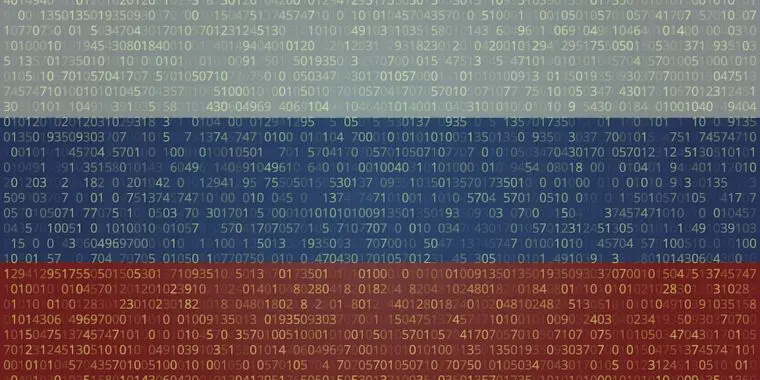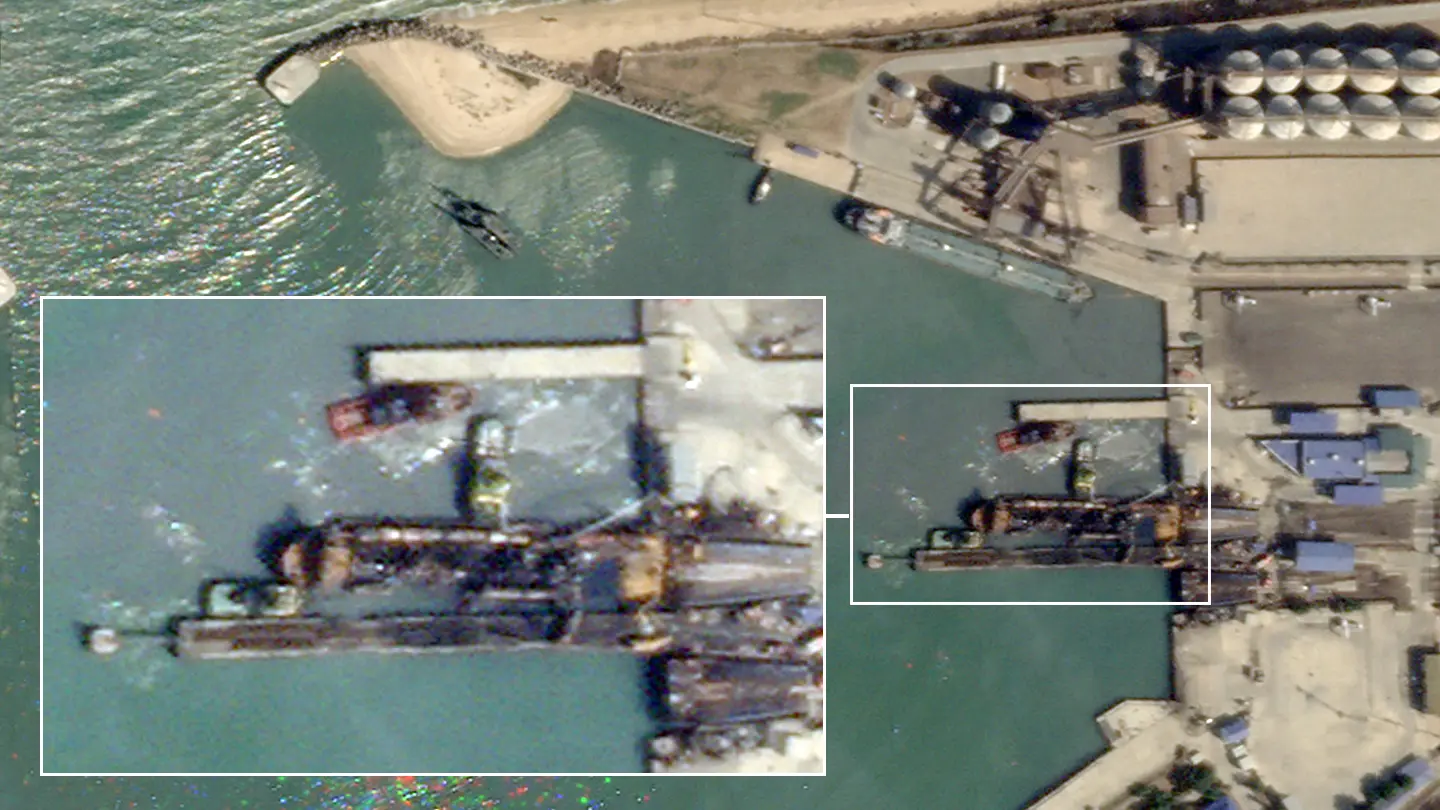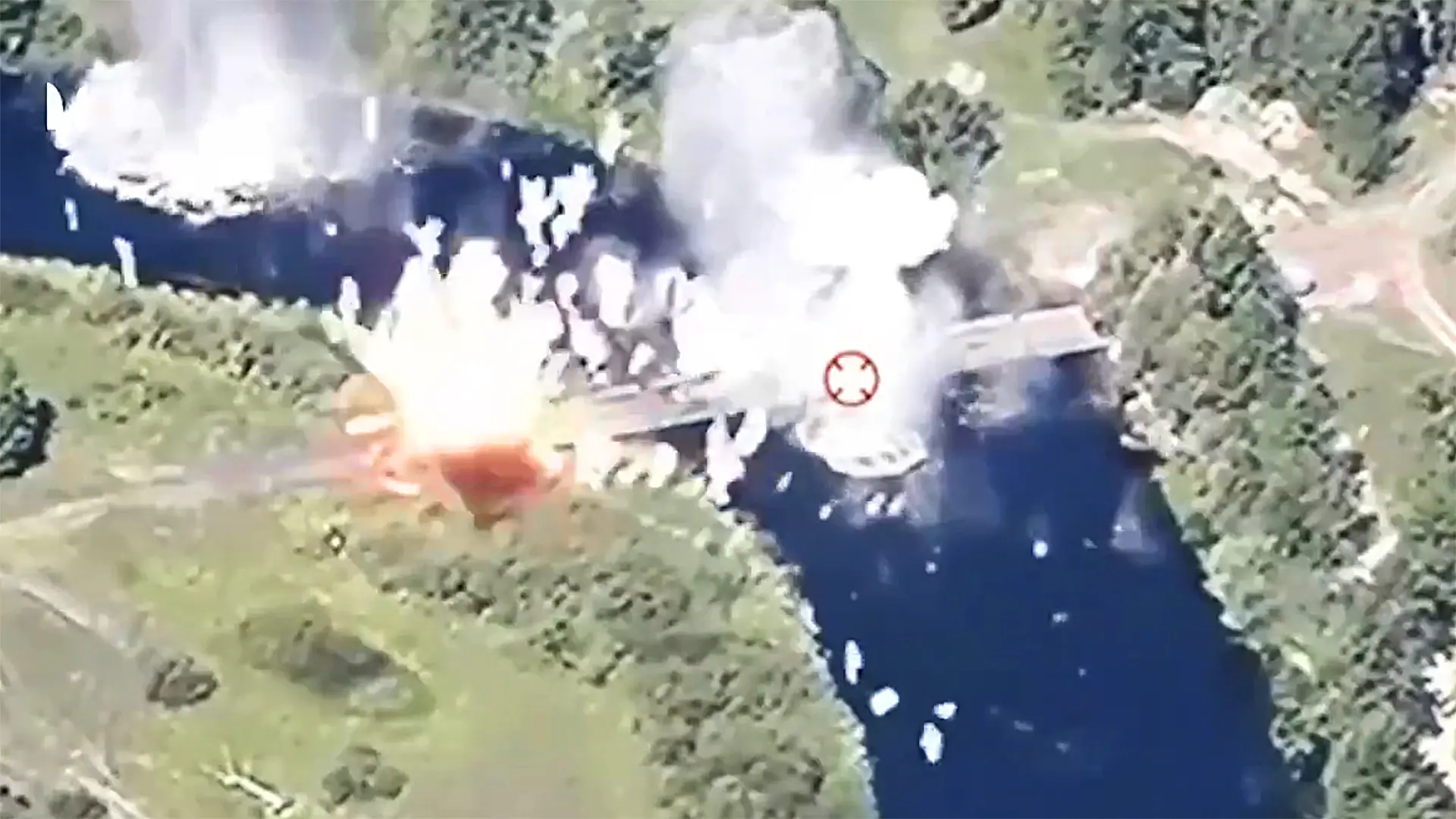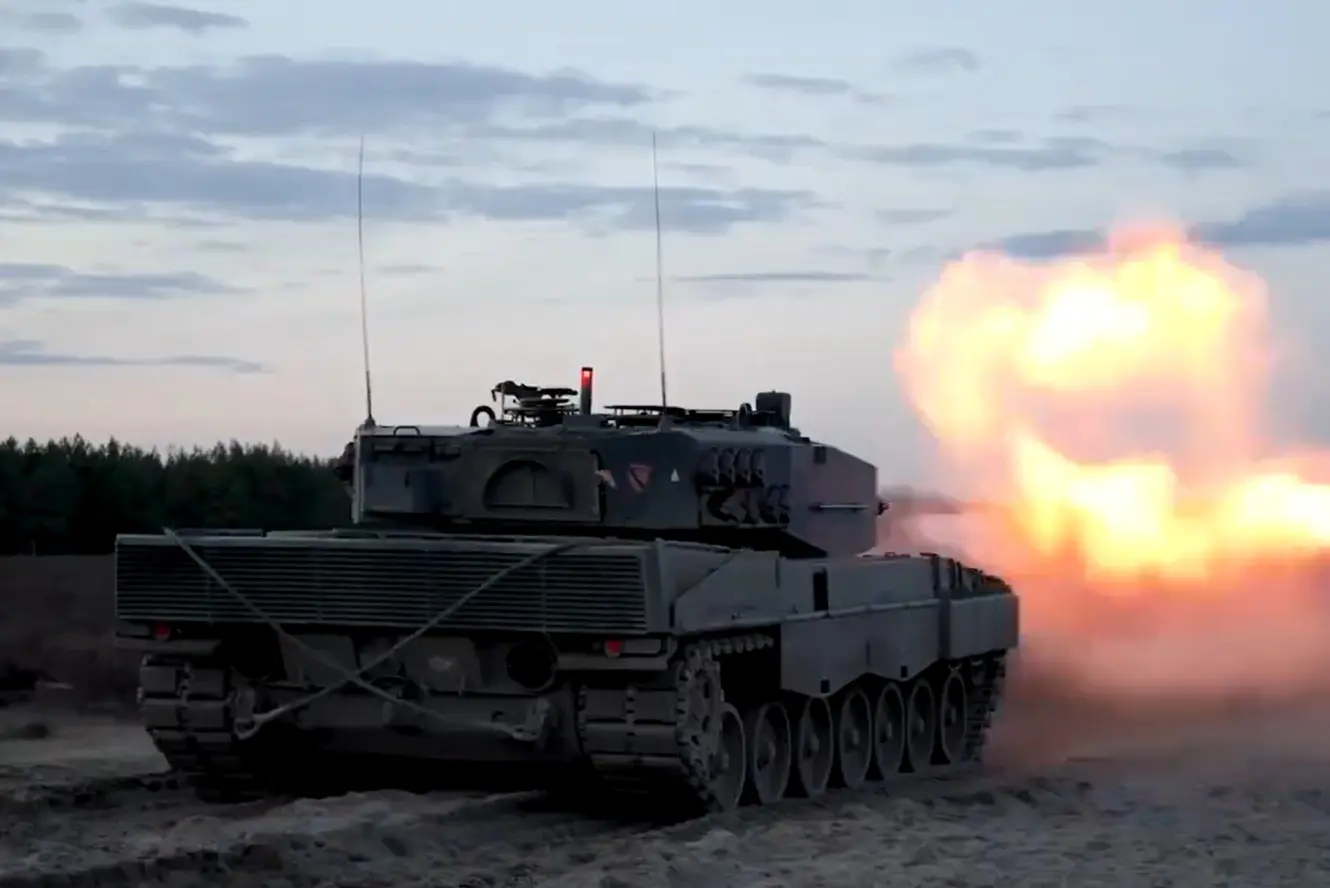I'd guess at least some chance of drugs being involved.
I was just in a restaurant where some presumably meth head got a sandwich. Kept talking to the air, doing circuits around the place, couldn't sit still for a minute, was getting himself agitated talking to the air.
I remember watching Donut Operator -- an ex-cop who used to be on a SWAT team and who does commentary on a bunch of YouTube videos. He's said a number of times that the people that he least liked having to deal with when working as an officer were the meth addicts. Really unpredictable, could wind up becoming violent after acting normal a moment earlier.
I don't think that that's grifting.
Like, there's no fraud or misleading material here. Trump's campaign is (presumably) providing exactly what one would expect for the donation: trying to improve Trump's chances at the White House. They're maybe taking every chance to push for money, but constantly trying to sell stuff alone isn't grifting.
If it were trying to get people to invest in Trump Media & Technology Group or something, where I think that a lot of small investors have a rather-confused take on the company's prospects, then I'd be more-inclined to agree.
The government will also temporarily raise the fees doctors receive from health insurance around a national holiday period as the strike increases strains on the medical system.

I would, at this juncture, point out the slightly surreal fact that it is 2024 and:
-
The primary American strategic bomber is the B-52. The basic aircraft first flew in 1952.
-
The primary Chinese strategic bomber is the H-6. While the H-6 itself is newer, this is the Chinese version of the Soviet Tu-16, which started being manufactured in 1952.
-
The primary Russian strategic bomber, two of which were flying along with this H-6, is the Tu-95, which started being manufactured in 1952.
The arrival of Chinese H-6s off American shores is a major, but not unexpected landmark in China's power projection evolution.

I would, at this juncture, point out the slightly surreal fact that it is 2024 and:
-
The primary American strategic bomber is the B-52. The basic aircraft dates to 1952.
-
The primary Chinese strategic bomber is the H-6. While the H-6 itself is newer, this is the Chinese version of the Soviet Tu-16, which dates to 1952.
-
The primary Russian strategic bomber, two of which were flying along with this H-6, is the Tu-95, which dates to 1952.
Only eight weeks since the last sniper tried taking Trump's head off.
For me, it’s corn on the cob.
Man, I dunno if I really want to explore this rabbit hole, but I'm sure that there's much-less-tolerable stuff out there. Say, live mice or something.
The French Ministry of Culture has selected eight finalists to design replacement windows for the celebrated cathedral—and not everyone is happy

New visitors are often uninterested in the cultural aspects of the country, and show no inclination to observe its rules of etiquette. Overcrowding is also a problem on public transportation and at landmark sites

Empty villages, disillusioned young workers, and government officials scrambling for solutions: this is the stark reality Euronews uncovered in Greece, where the country is bracing for a major population collapse fuelled by plummeting numbers of births, mass emigration, and low fertility rates. #Eur...

For whoever downvoted this, if it's out of concern about our resident airborne cephalopod engaging in antisemitism, I believe that he's poking fun at Marjorie Taylor Greene.
Back in 2018, before Marjorie Taylor Greene was a household name and a member of Congress, she took to Facebook to share a convoluted conspiracy theory. She suggested that a solar energy laser generator was being used by Pacific Gas and Electric, in collaboration with figures like Jerry Brown and Dianne Feinstein’s husband, to clear land in rural California for a $77 billion high-speed railway. She highlighted a connection between a board member of PG&E and Rothschild, Inc. The insinuation was clear to many: The Rothschilds, a historically wealthy Jewish family, were behind this nefarious plot.
The point-to-point nature of lasers makes them more secure than radio frequencies, and they can’t be jammed the way radio can.

Italy’s army is set to begin guarding medical staff in Calabria starting Monday. The decision follows a series of violent attacks on doctors and nurses.

Hmm.
I think that this isn't actually of massive significance, looking at this summary:
https://d3i6fh83elv35t.cloudfront.net/static/2024/06/scotus_6-14.pdf
That is, it sounds like the argument was over whether the ATF was granted authority by Congress under the GCA to issue such a ban, rather than whether the GCA passed constitutional muster.
I mean, okay, it has an impact, but it isn't really on par with cases evaluating whether law is in conformance with the First Amendment.
If you're trying to compare cost of living in different areas in the US, there are a number of online websites that will do that.
Here's one:
https://www.bankrate.com/real-estate/cost-of-living-calculator/
EDIT: That doesn't answer your question fully, obviously, but it's probably one piece that you want if you're trying to find some rural place to move to.
If you want to get deals for the grocery store you need their app
That's because they want to get their app on your phone so that they can perform data-mining using the data that the app can get from the phone environment.
I mean, I don't think that it's worth bothering with trying to game the system. I'm not going to give them my data, and I don't really care about the discount that they're offering for it. But if you want to do so, you can probably run an Android environment on a server and use the equivalent of RDP or VNC or something to reach it remotely.
grabs a random example
A container-based approach to boot a full Android system on regular GNU/Linux systems running Wayland based desktop environments.
Need to connect that up to VNC or RDP somehow if it doesn't have native support.
EDIT: I think that I'd take a hard look at how much it's likely to save you relative to how much time and effort you're going to spend on setting up and maintaining this, though.
Okay, the fact that it can manage that is up there with my amazement at some other unexpected homeruns from AI image generation, like papercraft images and isometric art.
For me, video is rarely the form that I want to consume any content in. It's also very obnoxious if I'm on a slow data link (e.g. on a slower or saturated cell phone link).
However, sometimes it's the only form that something is available in. For major news items, you can usually get a text-form article, but that isn't all content. I submitted a link to a YouTube video of a Michael Kofman interview the other day talking about military aid to a Ukraine community. I also typed up a transcript, but it was something like an hour and a half, and I don't know if that's a reasonable bar to expect people to meet.
I think that some of this isn't that people actually want video, but that YouTube has an easy way to monetize video for content creators. I don't think that there's actually a good equivalent for independent creators of text, sadly-enough.
And there are a few times that I do want video.
And there may be some other people that prefer video.
Video doesn't actually hurt me much at this point, but it would kind of be nice to have a way to filter it out for people who don't want it. Moving all video to another community seems like overkill, though. Think it might be better to have some mechanism added to Threadiverse clients to permit content filtering rules; I think that probably a better way to meet everyone's wants. It'd also be nice if there were some way to clearly indicate that a link is video content, so that I can tell prior to clicking on it.
One thing that I found out was that as "most-Minecraft-like" games for Minetest, there's apparently Voxelibre (renamed Mine Clone 2) and Mineclonia (fork of Mine Clone 2). Just out of curiosity, if you looked at both, what made Voxelibre particularly appealing relative to Mineclonia?
I've played Minetest, even contributed some code IIRC, but that was some time back, haven't ever played the derived games. Kind of thinking about maybe giving it a go now that there's apparently more there.
I'm not the person you were talking to, but I agree that I don't think that they have trouble distinguishing between nuclear and non-nuclear waste.
You can find out what's listening on port 53 by running:
# netstat -ntap
It'll give you a process name, PID, and port number.
You can still get a few phones with built-in headphones jacks. They tend to be lower-end and small.
I was just looking at phones with very long battery life yesterday, and I noticed that the phone currently at the top of the list I was looking at, a high-end, large, gaming phone, also had a headphones jack. The article also commented on how unusual that was.
Think it was an Asus ROG something-or-other.
kagis
https://rog.asus.com/us/phones/rog-phone-8-pro/
An Asus ROG Phone 8 Pro.
That's new and current. Midrange-and-up phones with audio jacks aren't common, but they are out there.
Honestly, I'd just get a USB C audio interface with pass-through PD so that you can still charge with it plugged in and just leave that plugged into your headphones if you want to use 1/8th inch headphones. It's slightly more to carry around, but not that much more.
Plus, the last smartphone I had with a built-in audio DAC would spill noise into the headphones output when charging. Very annoying. Needed better power circuitry. I don't know if any given USB C audio interface avoids the issue, but if it's built into the phone, there's a limited amount you can do about it. If it's external, you can swap it, and there's the hope that their less-limited space constraints meant that they put in better power supply circuitry.
Babies do start to pick up on faces early on -- we've got some hardwired stuff there -- and on the mobiles there, the faces are away from the baby.
https://www.whattoexpect.com/toddler/self-recognition/
At birth: Even though your baby doesn’t recognize you, she certainly likes the look of you. Studies have shown that even newborns, with their eyesight limited to about 12 inches, prefer to look at familiar faces — especially yours.
Months 2 to 4: Your baby will start to recognize her primary caregivers' faces, and by the 4-month mark, she'll recognize familiar faces and objects from a distance.
Most of the complex details and shapes are facing away. Oddly, of the mobiles I see there, the few designs aimed at the baby are mostly black-and-white, not colorful, while I'd have also thought that color would be preferable.
I won't bother to make it myself, but my mother used to make a very light coffee cake on weekends that I really liked when it was very fresh and hot. Probably have the recipe somewhere. Called "cocoa ripple". Think I've seen it elsewhere.
kagis
This looks kinda similar. I'd leave out the chocolate chips, though.
https://mindeescookingobsession.com/chocolate-chip-ripple-coffee-cake/
For something that I'd actually be willing to make and like, large portions of scrambled eggs. Throw in some random spices from the spice cupboard and a little olive oil.
Nuclear waste doesn't really pose problems substantially different from other forms of waste. There's lots of waste that isn't good for you if you come into contact with it, and stuff that'll remain in that state for a lot longer than anything radioactive enough to be a concern is.
YouTube Video
Click to view this content.
This week, Max and Maria were joined by military analysts Michael Kofman and Rob Lee to discuss the latest phase of the war in Ukraine. Max and Maria asked them for their thoughts on the ongoing Ukrainian offensive in Kursk, and whether or not this seizure of Russian territory by Kyiv exposes Russian threats of escalation as hollow. If they are hollow, does that mean Western "red lines" on certain kinds of aid to Ukraine should be reassessed?
Silver made the announcement on his podcast, shortly after being publicly praised by former President Donald Trump.

I am not very interested who Nate Silver will vote for; I am not very enthusiastic about Newsweek's choice of title. I think that's probably by far the least-worthwhile piece of information in the article.
But what I do think is interesting is that he's got an assessment of the impact of the presidential debate up:
> He also discussed the candidates' win probabilities following their debate on Tuesday: "Before the debate, it had been like Trump 54, Harris 46. These are not vote shares. These are win probabilities. And after, it's 50-50," Silver said. > > "She, right now, is at 49 percent of the vote in polls," Silver said on the podcast. "To win, she has to get to 51 percent—51 because she has a disadvantage in all likelihood in the Electoral College." > >Despite having previously shown Trump as surging in the polls, Silver's model now has him neck and neck with Harris.
WhisperGate campaign targeted Ukrainian critical infrastructure and allies worldwide.

This post just got inspired by (trying) to sign another receipt where the restaurant had a clogged ballpoint that would write only intermittently.
I don't carry a pen with me. Most extended text I work with these days is typed, so don't use one enough to really do so, but I have thought about doing so.
There are a couple of pen communities on Lemmy (which I'll mention below, for folks who might be interested). Thought I'd get a broader cross-section view of the general public, though; pen enthusiasts tend to have their own, often kinda niche, positions.
A few years back, I decided that I'd hit up an online pen store, get a variety of pens, and see what I liked.
In general, I've found that:
-
Ballpoints are the most-common pen I see in the US. They use oil-based ink. They require a high amount of pressure to write with. They are inexpensive, don't smear, and don't bleed. And they are the only option if you need to use carbon paper, like on a check, due to that high pressure. But they are also exasperatingly prone to clogging, particularly on some receipts -- not sure if it's due to some sort of coating on the receipt paper. If you particularly like a given case, you can get non-disposable pens with semi-standardized inserts to "refill" a pen; these contain a replacement tip and ink container.
-
Rollerball pens or gel pens use water-based ink. I'm generally pretty enthusiastic about them; they're probably my favorite as things stand, though I grew up mostly with ballpoints. They do have some drawbacks: they are more-prone than ballpoints to smearing (for those left-handed people out there who don't write right-handed and drag their hand through fresh ink when writing, I suspect that that's especially annoying). They're more-prone than to bleeding through paper (though this depends on on the paper and ink). However, my experience has been that they do much better than ballpoints when it comes to writing consistently without clogging. They also write much more-smoothly than ballpoints; the tip's interaction with the paper is closer to "gliding" over it, is less-fatiguing than writing with a ballpoint; many people find this to be a rather-pleasant surprise if they're used to ballpoints. Larger-diameter tips are even smoother. I have no idea why I see fewer problems with clogging with these, as intuitively I'd think that "water would dry out, and oil wouldn't". But, well, I just rarely see clogging with 'em, whereas with ballpoints, it's a near-universal. As with ballpoints, you can get semi-standardized inserts to "refill" a pen if you want a non-disposable. I would encourage most people to, if they have only used ballpoints in their life, to give a rollerball a try at some point; I was significantly happier.
-
Felt-tip pens have a solid core through which ink moves. I used to think of these mostly as permanent Sharpies for writing on odd surfaces (thick, not something you'd write with), highlighters (again, special-purpose, not something you'd write with) or washable, large-diameter pens for kids doing coloring or something, again not what you'd write with. But I have had some narrow-diameter felt-tip pens, and they tend to work pretty well. They don't clog. They can dry out, if you leave them uncapped, but you can normally get even those going by adding a drop of water to the tip and letting the pen sit for a while. These do have some downsides -- if you let the tip sit on one place on paper, they tend to bleed through, since it keeps dispensing ink. That's not a problem with ballpoints or rollerballs. My experience is that they have more friction than rollerballs, don't have quite the "gliding" feel. You have a lot of options as to size of the tip, can get very large ones. For writing, you probably want a narrow one; these have a metal sleeve and just expose a bit of the felt at the end. Apparently it's possible, for some of these, to get refills, though I don't believe that it's common; these come in the form of liquid ink. Normally, I believe that these are disposables.
-
Fountain pens. I really thought that these were entirely-obsolete, though they certainly have some ardent fans. I've read a lot from enthusiasts about how one should clean nibs, only store them in particular orientations, etc. However, on a whim, I picked up a package of cheap disposables. I then stored them in a hot car for years, didn't clean them at all, ignored storage orientation, did pretty much everything that I was told shouldn't be done with fountain pens. They wrote without a hitch. So I decided to give 'em more of a chance. These have something of a "gliding" feel, kind of like rollerballs. The tips are a bit more-fragile than rollerballs or ballpoints, can damage them by stabbing things. The big drawback: these guys are prone to bleeding through paper; having a sheet of blotting paper or maybe a clipboard beneath when writing to soak up any extra ink is a good idea, unless you've got more control than I do. I did pick up some thicker, more-expensive paper, and that helps a considerable bit, but obviously, if you intend to use only one type of special paper for writing, that's a pretty substantial constraint on pen use. They also tend to be more prone to smearing. Like felt-tips, as long as you keep the nib down, they'll keep dispensing ink, so you gotta train yourself to lift the nib if you're stopping movement. The big selling point with these, as best I can tell, is that you have an extremely wide variety of inks, and using non-disposable fountain pens that permit for refills is very common. Some people mix their own. The inks have various properties -- here's a page talking about sheen, shimmer, and shading -- that can let them create really visually-impressive effects. They can dispense all sorts of exotic inks that wouldn't work well in ballpoint, rollerball, or felt tip pens. I've never taken advantage of this, don't write enough for it, but I do think that it's neat; I have occasionally thought about picking up a fountain pen plotter, but don't think that I'd likely plot enough for it to be worthwhile. Looking at the state of plotters and printer manufacturers, which frequently use a razor and blades model for ink, I think that it'd be nice to just be able to get whatever consumables from whomever.
There are a few other kinds of exotic pens, like fudepens (or "brush pens") that are really more-interesting when doing stuff like East Asian lettering or some kinds of art, but aren't really what you'd want for writing in normal-sized Latin script. Or paint markers; also not really something you'd expect to normally write with.
In general, I found that I preferred larger tips. As long as I don't have to write in a too-confined space, ink flow with ballpoints and rollerballs was more-consistent and with them or felt tips, the writing was smoother.
As a kid, I used to use wood or mechanical pencils, but unless one needs erasability, I don't really feel that they stand up to pens. With wood pencils, one needs to lug around a sharpener. With either, the graphite tends to smear over time; fold up a paper with pencil writing and put it in a pocket, and it'll slowly blur to unrecognizability. And the graphite gets on things (and I'd just as soon not be having electrically-conductive dust being dumped everywhere).
For me, the big issue with going crazy on pens in 2024 is that I just don't use one all that much. Even a lone disposable pen will last me a very long time. But it is nice to still be able to write consistently when one does want to write, and I felt that I'd never really sat down and looked into the various options out there.
Since I think that it's worthwhile to mention relevant communities to help people find them, if they haven't yet:
!fountainpens@lemmy.world
!fountain_pens@lemmy.world. Doesn't seem to be getting much traction.
!fountainpens@infosec.pub. No traffic.
!pens@lemmy.world. Only a little traffic.
!pens@feddit.uk. No traffic.
There are also some .ml-based communities; I tend to use non-ml-based communities in preference to .ml-based communities myself, but for those who feel otherwise, there are !fountainpens@lemmy.ml, !pens@lemmy.ml, !pen@lemmy.ml, and !pensandpaper@lemmy.ml, none of which are seeing much activity.
A common task people want to perform is running a set of given programs during every Wayland session.
GNOME and KDE have their own approaches and graphical utilities for down this. For those of us who don't use a desktop environment, how about in Sway?
A bit of experimentation appears to show that this syntax is a pretty reasonable way to do this:
# Power notification support exec_always flock -n $XDG_RUNTIME_DIR/$WAYLAND_DISPLAY-poweralertd poweralertd -s
# Make clipboard persist after application termination exec_always flock -n $XDG_RUNTIME_DIR/$WAYLAND_DISPLAY-wl-paste wl-paste --watch clipman store
Thought I'd share for anyone else running into this.
For some Sway users, that may be enough. But if anyone wants to read more history, here goes!
Background and rationale:
Once upon a time, it was conventional to have a shell script, ~/.xinitrc, that was invoked whenever someone started up an X server with startx after logging in on an (initially) text terminal. Any per-session commands could be invoked here.
Later, when display managers showed up, it became common for a Linux machine to go straight to a graphical display at boot and show a login prompt from there. xdm showed up; if it was started, it'd run another shell script, ~/.xsession. A lot of people, including myself, just symlinked ~/.xsession to ~/.xinitrc.
Still later, some desktop environments, like GNOME or KDE or some less-popular ones, introduced their own schemes for storing a list of programs to start when the graphical environment came up.
Wayland+sway -- to my initial surprise and annoyance -- isn't really geared up for that. In theory, you can use whatever login manager you want. I use a non-standard login manager -- greetd to launch agreety (and I'd use emptty if it were in Debian bookworm) which lets me log in on a terminal. But these don't provide functionality to run a startup script. This kind of makes sense -- on X11, once the display manager starts things up, X11 can run programs, whereas Wayland really requires a functioning compositor to be going, which means that Sway really needs to be up and running. So maybe it makes sense for the compositor, Sway, to handle launching startup programs in the graphical environment, rather than the login manager. but Wayland compositors don't have even a semi-convention for a "login script" like ~/.xinitrc or ~/.xsessionor~/.xprofile` or an equivalent, which surprised me. That might be because Wayland compositors are heavier than their X11 window manager analogs, and perhaps its less-expected for people to be switching among them.
What Sway does is to, in its config file, ~/.config/sway/config, have two directives, exec and exec_always. One can make them invoke a script. These can be handy. But they don't quite what I'd ideally like them to do.
You see, Sway -- like some X11 window managers -- has the ability to permit a "reload", where it re-reads its config files. That's handy! If an X11 window manager couldn't do that, when you changed its config file, you'd have to close all your graphical programs, log out, and log in again to confirm that it did what you wanted. You don't have that problem with Sway. You can just change its config file, ask Sway to do a reload, and it'll be "re-applied". And then exec and exec_always come into play -- the former will run a program only when Sway initially starts, but not when it does a "reload". The latter will run a command each time, both at Sway start and each time Sway reloads its config file.
For some programs, exec and exec_always are sufficient. Maybe you just want to make sure that a program has been run and then terminated at least once in your current session.
But that isn't normally what I want to do. By far my overwhelming need -- and I suspect this is true of others -- is that I want to have some kind of daemon running and persisting in the background of my session.
Some daemons try to be clever. If you try to run multiple instances at once, the new instance will just bail out. blueman-applet is like this. And if your daemon works like this, then running exec_always is fine. If you run a new instance and there's an already-running instance, the new one will just bail out.
But some daemons don't -- they just start up another instance. So every time you reload your Sway config, exec_always will start another instance of that daemon. I have a couple of daemons like that. poweralertd notifies me when my laptop battery is getting low, for example. If I just let poweralertd do its own thing and start it via exec_always, then when my battery gets low, if I've reloaded my Sway config 5 times, I'll have 5 instances running, and get 5 warnings when my battery gets low.
But running exec isn't ideal either, because then you have to give up on Sway "reapplying" your config when you reload it. If I want to have a new daemon running in the background of my Wayland session, I don't want to have to log out to ensure that my config is working correctly.
Now, at this point, I suspect that a number of people think "Aha! What about systemd?"
So, not everyone is a huge fan of systemd. It is a very large software package that provides a lot of useful functionality to most present-day Linux systems. So you might not want to tie yourself to systemd.
But more-problematic -- while systemd does have the ability to manage both "system" daemons that run one instance per system, typically come up when the system does, and "user" daemons, one instance per user...that isn't quite correct for Wayland. It's reasonable for a user to have multiple concurrent Wayland sessions on a Linux machine. Maybe it might make sense to selectively share some functionality among those, like one mpd instance to play music -- dunno about that. But you definitely don't want to have random Wayland programs run in each session running one-instance-per-user, because otherwise, any additional Wayland session will have the programs just not come up in that new session.
It looks like some people out there have recognized that this is an issue. uwsm looks to my quick glance at being a stab in the direction of "per-Wayland-session systemd-based management". But whether-or-not it could be used, it's not in Debian bookworm, and I want to use stock software for basic stuff like getting my desktop up on a new system.
Hence, we get to the above flock-based approach.
So, let's say that one wants to have a program like wl-paste running persistently, but only one per-session. How?
We want to have only one instance running at once. Traditionally, the way to achieve that on a Unix system is to create a file, then establish a "file lock" on it via the flock(2) function; this is guaranteed by the OS to be an atomic operation, only one can occur. There's a command, flock(1), which does all this at one go -- it creates a file if it doesn't exist, establishes a file lock on it, and then, while continuing to run, runs a specified command. When a process goes away, the OS releases the file lock, so when the invoked command (here, wl-paste) exits, the flock process exits, and the file lock goes away. By default, flock will block if there's a lockfile with a held lock, which is what you want if you just want to make sure that two commands wait to avoid interfering with each other but with -n, it'll just fail; this is the behavior you want if you want to make sure that you have one, but only one, daemon active.
And we want to have one instance per session, not per user. The $XDG_RUNTIME_DIR environment variable provides a temporary directory per-user...but not per session. $WAYLAND_DISPLAY is guaranteed to be unique per session for a given user. So any path containing both $XDG_RUNTIME_DIR AND $WAYLAND_DISPLAY is going to be unique per-session; we just need an extra bit of text ("-poweralertd") to make it unique to a given daemon per session.
Given how this wasn't an immediately-obvious approach to me, thought that I'd point it out to anyone else who might be using Sway and want per-session daemons running.
He has been placed under formal investigation as part of a probe into organised crime on the messaging app, French prosecutors say.

The Conro Trader was the last of three vessels that ferry large quantities of fuel across the Kerch Strait.

By pushing near the town of Tetkino, Ukraine could place an estimated 3,000 Russian troops in a pincer and clear several hundred more square kilometers of territory.

The video shows a now deceased Ukrainian MiG-29 pilot executing a toss release of the French-made weapons.


I've got a high opinion of Michael Kofman's commentary on the Russo-Ukrainian War, consider him to be one of the better commentators talking about the matter to follow; for those not familiar, Kofman's a Ukrainian-American analyst specializing in the Russian military. A while back, he started doing a regular podcast with War on the Rocks called The Russia Contingency; they just came out with a new episode, the first I'm aware of where he's talking about the Kursk offensive. They don't do transcripts, but I thought I'd listen to it and type up a summary for anyone interested who may not like the podcast format.
This also has Dara Massicot, a coworker of his who he also sometimes does interviews or panel discussions with. Both are currently at the Carnegie Endowment for International Peace; when I started paying attention to him, Kofman was at the Center for Naval Analyses and Massicot was at Rand.
I personally particularly like Kofman's tendency to focus on highlighting what factors are likely to be or become significant, something that I don't see a lot of well-informed people putting online. I'd call his stuff generally well-informed and objective.
This is was released August 10, so it's about a day or so old, and the situation is obviously rapidly-evolving.
I've done these transcripts before, and have tried to get placenames and such correct, but I do not speak Ukrainian or Russian, so this is my best-effort attempt to try to provide references to placenames and people using maps and what resources I can find online (Google Maps, Deep State Maps, ISW's maps, etc). I may get things incorrect; that's on me and my own limitations. Kofman's stuff tends to be pretty information-dense, so usually my summaries of his stuff head closer to being transcripts.
Summary:
Kofman
-
Major caveat: Operation started August 6, so about 4 days of activity so far. Most material in this environment tends to show up about a day or two days after happening, so anything publicly-known is going to be dated by about a day or so.
-
Ukrainian regular forces have pushed in from Sumy into Russia's Kursk Oblast. They seem to have seized the town of Sudzha. They pushed northwest towards the town of Snagost and are outside Kremyanoye further northwest. They've advanced north; it's unclear how far, but maybe several settlements down the road towards Liubimovka and Kursk itself. Also made several salients advancing branching down roads coming from it. At this point, from open source material, statements that Ukraine has captured maybe 350 square km, probably more by now, but Kofman does not expect that all of this territory is yet controlled, or that it's early to make that determination. [I expect that this is due to it including areas between roads where Ukrainian forces have no physical presence.] It is also not clear yet what they intend to hold. There is definitely a salient that they have made; they overran the border guards and the initial conscript units that were there. They took quite a few POWs; we do not know how many, but most likely in the hundreds. Ukrainian forces advanced quickly, but also important to remember that advance forces entering territory is not the same as controlling territory. A lot of speculative maps floating around out there from various people trying to put together a picture of what's happening.
Massicot
- Agreed. Not yet clear whether municipal buildings are controlled, what is the status of the local police force, is it only roads that are being moved up, how are they holding behind those. Believe that who are prisoners may have political significance for the Kremlin; this has been a sensitive political topic for Putin for some time, that conscripts not be involved. I'm also watching who Russia is looking to blame for this, and has been shifting around but looks to be the Chechen Akhmat group [Kadyrovites], that they were supposed to defend but ran away or couldn't close. In general, a lot of movement right now. When I see advancing maneuvers like this, have to ask what is the logistical plan; how are the forces going to be resupplied and refueled. That information is not visible to us right now. Lots of footage online of things exploding, but important things, things that Kofman and I follow, like where are the reinforcements, what are the logistics plan...that's the key part to watch for right now.
Kofman
- Very clearly not like the previous raids organized by HUR [Ukrainian military intelligence]. This is an operation clearly planned by the Ukrainian general staff. Operation composed of regular forces, probably supporting elements from Ukrainian national guard, maybe territorial defense, and Ukrainian border service. From what people have been able to identify, there are elements of at least five different brigades. I want to be clear about this: elements. Sometimes when people see brigade numbers, they assume that all of the brigade is present. That's not always the case. As best as Kofman can tell, this operation maybe involves something like a divisional-sized element, maybe best guess ten to fifteen thousand men. It doesn't look that large. Kofman doubts that what we're seeing is just the tip of a spear, for a couple of reasons. First, a number of these brigades were moved off the line in Donetsk and other areas. A couple of them are brigades that had been recently-created and were going to serve as a reserve. Based on what Kofman's seen while doing fieldwork in Ukraine, there isn't a great deal of excess manpower or additional brigades available for this sort of operation, so not likely that Ukraine has a lot of free forces to throw into this without having to pull them off the line. A number of these units were pulled off the line; elements of 80th Air Assault Brigade, 82nd Air Assault Brigade, 22nd Separate Mechanized Brigade, probably have some elements of 95th Air Assault Brigade, maybe 5th Separate Assault Brigade as well, along with all sorts of supporting elements, maybe one of the newer 150-series brigades like 150th. Bottom line, in terms of operation size, it's probably closest to the Ukrainian offensive in Kharkiv in 2022. It looks like it's following a similar template. That's not surprising, given that Syrskyi's in charge. I believe that initially they were quite successful and had a significant breakout. My first reaction is that this looks deeply-embarrassing for Russia. I don't know what you have to do to get fired if you're Gerasimov, your favorite general, not sure what it takes, but...laughs
Massicot
- I'll say this. If Surovikin was still involved in this, he would have built defenses and minefields on the other side of the border.
[From my past listening to Kofman's material, he has generally been critical of Gerasimov's performance relative to Surovikin's; he considered Surovikin's more-defensive-minded approach to be more dangerous for Ukraine, as it would force Ukranian forces to deal with Russian defenses in an attritional conflict, that Gerasimov's attempts to conduct offensives into strong Ukrainian defenses unwise and likely done for political reasons, at Putin's behest, due to Putin wanting to gain ground.]
-
Would guess that there are also units subordinate to HUR and SBU [Ukrainian intelligence agencies] involved in scouting things out in advance parties at start of offensive last week.
-
Share concerns with Kofman about Ukraine's ability to reinforce, and Ukraine pulling people off the line may make situation elsewhere more-difficult.
-
In terms of logistics, access is probably okay, but not sure what happens to logistics tail after it crosses the border to try to catch up with the guys who are all the way forward.
[Note that the border crossing being used is apparently the R200 -- Google Street View. This is a single two-lane road, and there does not appear to be a rail route through.]
- Is embarrassing for Russia. Still in initial stages; don't know how this is going to end, but for the first week, this reveals a lot of problems that shouldn't be present on the Russian side two years into a war. Right when the war started, Russia declared a state of emergency, modified martial law in all of the regions that bordered on Ukraine; this was one of them. What that does is gives local law enforcement and military enhanced power to set up curfews, set up roadblocks, to put in minefields, to do territorial defense things specifically to make it easier to defend when you're at war with your neighbor. The fact that we're two-and-a-half years into this and either Russian intelligence did not pick this up, which is a failing, or it went up to General Lapin, who commands this area, and then went sideways, or it went above him up the chain to Gerasimov. [Note: I have seen later news coverage that they did detect Ukrainian concentrations, that it reached Gerasimov, but that Gerasimov did not consider it significant and did not inform Putin about it.] Not clear to me yet who will bear ultimate responsibility. I think it falls on Lapin, who is in charge of border defense in this region, and seems to be some effort to blame Akhmat Group. You start to see appeals from Russian citizens, and expect them to become politically-damaging to the Kremlin. You start to see them...if you haven't seen them, they look like "we have supported the war for two-and-a-half years, we are a border town, our men are off fighting, and you haven't evacuated us, you're not providing for us, there's no help, this is dangerous and unfair". This is a dangerous message for the Kremlin to let bounce around in the information space.
Kofman
- We need to look at how this began. It is clear that Ukraine managed to achieve operational surprise. To be clear, folks like me didn't know that this offensive was coming. I don't think anybody did. I don't think that they told the United States or others. I have my own clear-cut theory as to why: my view is that tactically, Russia has actually had ISR coverage. There are videos posted of Russian drone feeds of them watching Ukranian forces before they crossed the border and as they were crossing the border. But as these types of operations continually show, war is a human endeavor, and technology may make the battlefield a lot more transparent at the tactical level, but people make mistakes, they don't prepare for things like this, they don't react in time. In some ways, it's not unlike what happened during the Kharkiv offensive, which people tried to portray as a surprise. In actuality, Russians were talking about it for two weeks during the buildup before Ukraine conducted it, and the Russian general staff just didn't respond or appropriately prepare or whatnot. I'm glad that you mentioned this; we continue to see Russian forces continue to make some of the same types of mistakes. And there are reasons for that. First, Russia seems to do quite poorly when it has to respond dynamically in a situation like this. So to some extent, you see Ukrainian units having the run of the place in these initial four days. Russian forces do far better when they're operating with a prepared defense, fixed lines, more in positional warfare. Much harder, as best I can tell, for them to coordinate action between different types of units. That still remains fairly weak, and it's interesting to observe. The other big issue is "what do you have to respond with"? Russia clearly has reserves, it has second-echelon units, it can pull units off from, say, the Kharkiv axis if it needs to. The issue you get, typically, is that newly-generated units are inexperienced. They also often aren't led by people who are that experienced. They will typically perform poorly against experienced units. This has been the case on both sides. Ukraine has had the same experience. Whenever it's thrown a battalion from a brand-new brigade to try to hold a part of the line...it's been fairly-consistent in this war. So when you have to send a reinforcement, and all your experienced units are on the front, your options are going to be newly-contracted personnel, or, worse, a battalion that's primarily conscript-staffed. And they're going to be very unprepared, and you're going to see things like we saw yesterday, which is an entire Russian column of trucks filled with infantry parked somewhere on a road essentially getting wiped out by a HIMARS strike. They probably lost a company's worth of men. That's the kind of mistake that the Russian forces along the line of control typically don't make. But it's definitely the kind of mistake that new units do make and will consistently be making when they're sent to reinforce and try to respond to this type of situation.
Massicot
- Agreed. When we think about that region, who might that be? Russia has several regeneration and training sites that are north of that area. They've probably pulled whoever was closest and was reasonably-available to do this, which is why you see that clumping. When I saw the drone feed of the POWs surrendering, that is really inconsistent with a lot of what we've seen inside occupied Ukraine from units who have been fighting for years. They typically don't surrender. Ukrainians will say this, we've seen it on drone feed, they'll shoot themselves in the chest or head with a rifle...they don't really surrender like that in an organized way. My first thought when I saw this was "are these conscripts?" But then I think, no, they were too big...I mean, men with muscles, 18-year-old Russian conscripts just have a different bearing and size. To me, this didn't seem like these were 18-year-old boys from a base. They were probably pulled from whatever training range was available, not experienced guys, and that's why you saw that. If these were hardened guys rotating out of the zone, what we've seen might have looked very different. The Russians are...presumably...it's not clear on how they're planning on responding to this, but they will, so I'd caution everyone that Week Two is going to look different from what we're sitting and looking at today.
Kofman
-
Yeah, it could go a number of directions. The Russian offensive on Kharkiv looked quite good in the first couple of days, but actually culminated by around Day 5 or 6. This is a very different operation and situation, but these things tend to be quite dynamic early-on, but the offensive action can very quickly reach a culminating point. Depends on what you have to exploit it with, have you thought through the logistics, do you have additional reserves to throw in to sustain momentum. Ukraine has air defense there for example, but this is clearly a fairly-narrow incursion; we've already seen them lose some of their air-defense systems, FrankenSAMs and what-have-you, we've seen Russian Lancet attacks and attack helicopter missions. So it's clear that Russian forces are suffering losses and getting personnel captured. My best guess that the forces that you saw were probably territorial troops of some kind, reservists...conscripts tend to be very young, I think you're right there, but we don't know who that was. It might have been border guards. It might have been the formations they created -- and they created a whole bunch of them -- to help guard the borders against raids, but these are...I'm not sure that it'd even be fair to describe them as second-echelon troops in terms of who they likely staff that with. They clearly were unprepared to deal with an actual mechanized assault and a planned operation by regular forces.
-
Let's talk about objectives. Here, we are sadly in the realm of speculation, but we should try to at least make some educated guesses. My first impression is that Ukraine likely would wish to trade any territory that they end up holding for Russian withdrawal from Kharkiv if they could. Alternatively, I think that the minimum objective here is to create a Krynky-type situation. For those who recall, Krynky was the lodgement that Ukrainian marines held for a very long time on the left side of the Dneiper River bank. Russian forces, particularly the Russian airborne, spent a long time trying to attack it. It cost them quite a bit in terms of losses. Ultimately, Ukrainian forces withdrew from it and abandoned that position. The purpose of a Krynky-type salient is that, of course, Russia would then have to throw a lot of forces at it since this is on Russian territory. The challenge is that for that to be successful...invariably Russia will be throwing in reserves. That's not even a guess; we've already seen that they've been moving reserves into the area to counter. The issue is that Ukraine pulled units off the line to do this and deployed units that were also what Ukraine had available in its reserve. The question now is whether Russia will deploy a substantially-larger force to counter this; will it be worth it? What the balance of attrition will be. And most-importantly, is it going to force Russia to pull forces from active operations that will materially-affect its current advances in Donetsk around Pokrovsk or the current positions that they are holding in that narrow buffer north of Kharkiv? So far, the Russian advance towards Pokrovsk has not stalled; if anything, it has accelerated over the last couple of days. I don't know if that's going to hold; I'm just saying that that is one of the litmus tests in terms of what the operation can achieve. If it does, it'll be very successful. I've heard -- I've read in papers -- folks advancing the idea that it could be leverage for some future negotiations. I am very skeptical of that; I think that the operation probably has some kind of concrete, Day 1, 2, 3 objectives. Maybe there is a clear objective that they are trying to get to there. I don't think that it can be especially grand given the forces arrayed there and how difficult it's probably going to be to hold that terrain. I do think that any operation probably has minimal and maximal objectives, and that they can change depending on how it unfolds and that's why you can be both right and wrong in trying to guess what they are. Something can have been a planning objective for the operation, and then the operation becomes much more successful than anyone expected, like Kharkiv did in 2022, and then you get much-more ambitious and then you try to advance much more than you initially-intended, or alternatively, the operation is less-successful, and you pare down your objectives. Political leaders will invariably say that their initial objective is whatever the thing looks to have achieved.
I don't actually use it, so it's no problem from my standpoint, but in case the admin team was unaware:
As of:
https://lemmy.today/post/307248
Photon was apparently working at:
https://photon.lemmy.today/
...but it presently just shows a blank page for me.